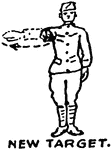
Orders of Martyniaceae, Gesneriaceae, Lentibulariaceae, and Globulariaceae
Pictured are flowers of the orders martyniaceae, gesneriaceae, lentibulariaceae, and globulariaceae.…

Children Holding Number Cards
Illustration of children holding number cards that can be used to write mathematics story problems involving…

Nyctanginaceae, Phytolaccaceae, Aizoaceae, and Portulacaceae
Pictured are the orders of Nyctanginaceae, Phytolaccaceae, Aizoaceae, and Portulacaceae. Flowers of…
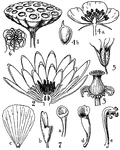
Order of Nymphaeaceae
Nymphaeaceae is an order of aquatic herbs including the water lily family. This order has eight genera…
Order of Ochnaceae
Pictured are flowers from the order of ochnaceae. The flowers pictured are (1) ochna, (2) gordonia,…
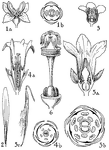
Orders of Oleaceae, Loganiaceae, Gentianaceae, and Apocynaceae
Pictured are the flowers and fruits of the orders oleaceae, loganiaceae, gentianaceae, and apocynaceae.…
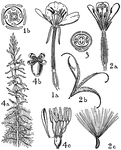
Orders of Onagraceae and Haloragidaceae
Pictured are flowers from the orders onagraceae and haloragidaceae. The flowers of these orders that…
Order Arms Standing
"The butt rests evenly on the ground, barrel to the rear, toe of the butt on a line with toe of, and…

Order of the Annunciation
"The religious Order of the Heavenly Annunciation, or of the Nuns of the Annunciation of Mary, was instituted…
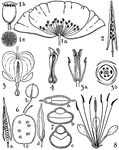
Orders of Papaveraceae, Fumariaceae, Cruciferae, and Capparidaceae
Pictured are the orders of papaveraceae, fumariaceae, cruciferae, and capparidaceae. The flowers of…

Orders of Plantanceae, Rosaceae, and Leguminosae
Pictured are the orders of plantanceae, rosaceae, and leguminosae. The flowers of these orders that…
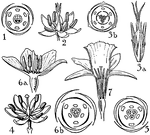
Pontederiaceae, Juncaceae, Liliaceae, and Amaryllidaceae Orders
Shown are flowers of the pontederiaceae, juncaceae, liliaceae, and amaryllidaceae orders. These flowers…

First order prism
"The prism of the first order consists of four rectangular vertical faces, each of which intersects…

Second order prism
"The prism of the second order consists of four rectangular vertical faces, each of which intersects…
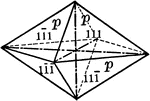
First order pyramid
"The pyramid of the first order is a form consisting of eight isoceles triangular faces, each of which…

Second order pyramid
"The pyramid of the second order is a form composed of eight isoceles triangular faces, each of which…

Quick Time
The signal to march at the faster pace of 'quick time.' The Royal Navy marches at a cadence of 116 paces…
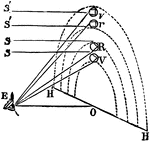
Secondary Rainbow
"The inner or primary bow is much brighter than the other; the outer or secondary bow has the order…

Orders of Rubiaceae and Valerianaceae
Pictured are flowers of the orders rubiaceae and valerianaceae. The flowers pictured are (1) galium,…

Child Holding Rulers
Illustration of a child measuring with rulers that can be used to write mathematics story problems involving…

Children Holding Rulers
Illustration of two children holding rulers that can be used to write mathematics story problems involving…
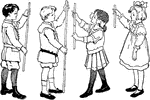
Children Holding Rulers
Illustration of children holding rulers that can be used to write mathematics story problems involving…
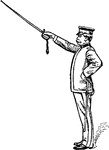
Drawn Saber
"When publishing orderes, calling the roll, etc., the saber is held suspended from the right wrist by…
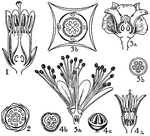
Orders of Sapotaceae, Ebenaceae, Styracaceae, and Symplocaceae
Pictured are flowers of the orders sapotaceae, ebenaceae, styracaceae, and symplocaceae. The flowers…
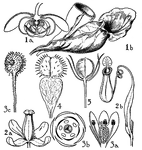
Orders of Sarraceniaceae, Nepenthaceae, and Droseraceae
The orders pictured are sarraceniaceae, nepenthaceae, and droseraceae. The flowers of these orders that…
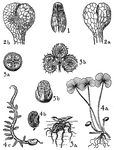
Schizaeaceae, Osmundaceae, Salviniaceae, and Marrsileaceae
Schizaeaceae: 1, aneimia, sporangium. Osmundaceae: 2, Osmunda, sporangium; a, front view, b, back view.…

Prism of the second order
"This is a form consisting of six rectangular vertical faces, each of which intersects two of the horizontal…
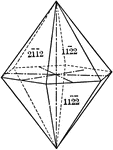
Pyramid of the second order
"This is a form composed of twelve isoceles triangular faces, each of which intersects two of the horizontal…

Section
Signal to inform the troops that the next signal will be directed at a certain 'section' rather than…
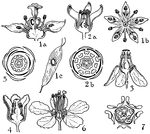
Orders of Simarubaceae, Burseraceae, Meliaceae, and Malpighiaceae
The orders of simarubaceae, burseraceae, meliaceae, and malpighiaceae are pictured. The flowers of these…
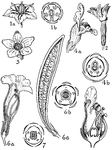
Orders of Solanaceae, Scrophylariaceae, Bignoniaceae, and Pedaliaceae.
Pictured are flowers of the orders solanaceae, scrophulariaceae, bignoiaceae, and pedaliaceae. The flowers…

Squad
Signal to inform the troops that the next signal will be directed at a certain 'squad' rather than everyone.

Squad Right About, March
"Extend the arm vertically above the head; carry it laterally downward to the side and swing it several…
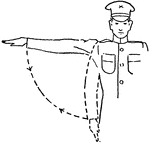
Squads Left, March
"Raise the arm laterally until horizontal; carry it downward to the side and swing it several times…
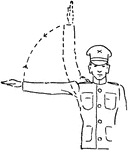
Squads Right, March
"Raise the arm laterally until horizontal; carry it to a vertical position above the head and swing…

Suspend Firing
Order given to troops instructing them to stop firing. Weapons are held, locked and loaded so that they…
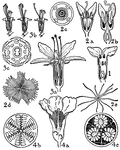
Orders of Thymelaeaceae, Elaeagnaceae, Lythraceae, and Punicaceae
Pictured are the orders of thymelaeaceae, elaeagnaceae, lythraceae, and punicaceae. The flowers of these…
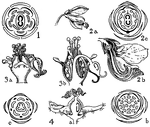
Orders of Tremandraceae, Polygalaceae, and Euphorbiaceae
The orders pictured are tremandraceae, polygalaceae, and euphorbiaceae. The flowers of these orders…

Tuscan order
"Applied to one of the 5 orders of arch, which allows no ornaments or flinting." — Williams, 1889

Tuscan Order
A stocky simplified variant of the Doric order that was introducted into the canon of classical architecture…

Typhaceae, Pandanaceae, and Naiadaceae Orders
The typhaceae order consists of perennial marsh herbs with creeping rootstocks. The pandanaceae order…
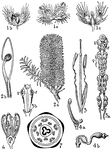
Urticaceae, Loranthaceae, and Olacaceae Orders
Shown are the Urticaceae, Loranthaceae, and Olacaceae orders. Urtica, banksia, protea, phoradendron,…
